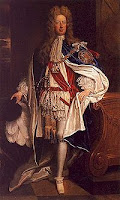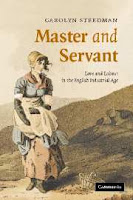Louisa Cornell, congratulations, you’re the winner of Tessa McDermid’s book. Please contact the Riskies at riskies@yahoo.com
 They may be the best thing since sliced bread but I can’t do them.
They may be the best thing since sliced bread but I can’t do them.
Really, I’ve tried. Let’s take the problem of Dukes first. They seem to outnumber the regular population about 5:1 so you’d think I could come up with one pretty easily. Somehow they just don’t exist in my particular corner of Romancelandia. Or if they do, they don’t behave in an appropriate ducal fashion.
In the Rules of Gentility, my heroine meets a member of the royal family, a Duke, misbehaving in a house of ill repute in the company of a bishop and several lightly clad females. He is neither hot, young, nor anything other than atmospheric wallpaper.
In my August, 2009 release A Most Lamentable Comedy (warning: shameless self-promotion, and new release date), I have a Duke who spends most of his time indulging his passions for sheep (no, not in that way) and antiquities. He is happily married. Without undue spoilers, he takes on the heroine as a mistress (sort of). He sets her up in a house and thoughtfully provides entertainment for her, a pianoforte (which she plays very badly) and
...there is an easel and a set of paints and brushes, tablets of paper and so on. A small bookcase holds some rather serious-looking literature bound in opulent gilded leather. Good God, it is like an expensive academy for young ladies, and I thought I was descending into the very pit of impropriety. It is bad enough to have become a whore, but to be expected to practice the accomplishments of polite society as well seems to be remarkably unfair.
The Duke reports: she stared at the books in the house as though they were vermin.
 And this is the crux of my problem with mistresses and the aristocracy: other than the obvious, what do they do the rest of the time? Call me a lefty if you will (oh, please!) but I like my characters to have some sort of social conscience, to do something other than frivol away their time.
And this is the crux of my problem with mistresses and the aristocracy: other than the obvious, what do they do the rest of the time? Call me a lefty if you will (oh, please!) but I like my characters to have some sort of social conscience, to do something other than frivol away their time.
I don’t want to see his grace become a spy unless I’m absolutely sure his land steward can be trusted to look after the tenants properly while he’s out performing deeds of derring-do and sleeping with unsuitable women.
And if a woman does become a courtesan, I want her to be at the top of the Harriet Wilson scale of cheekiness and good humor.
How about you? What do you think of the current overload of dukes and courtesans? Can you suspend disbelief?







